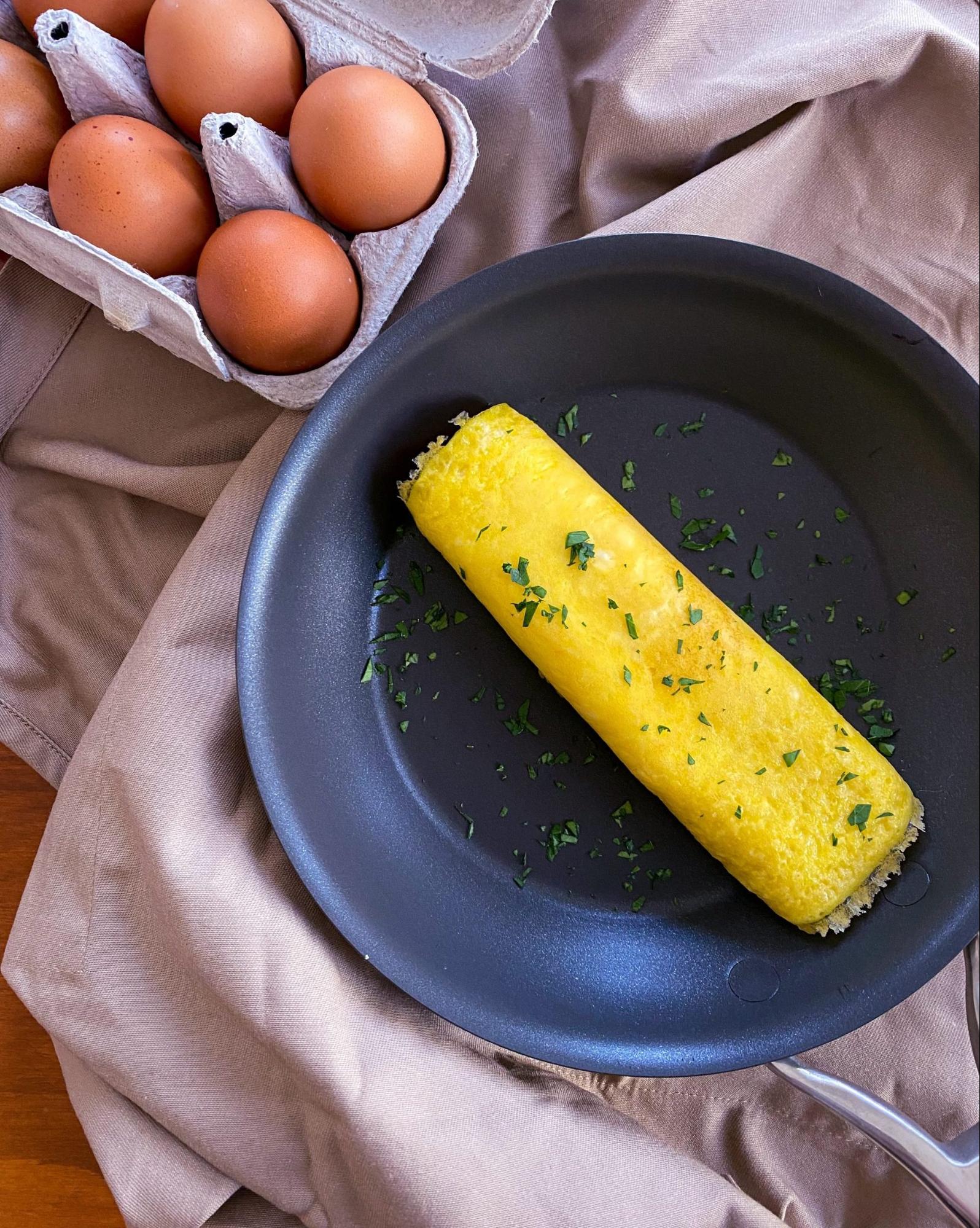Mastering the French Omelet: A Chef’s Rite of Passage
Hey Chefs,
Today marked a much-anticipated milestone in culinary school: Egg Day.
Egg cookery is one of the most fundamental—and revealing—tests of a true chef. Eggs are deceptively simple. They require precision, finesse, and an understanding of technique that separates a good cook from a great one. And among all the egg dishes we tackled today, the French omelet was my favorite.
At first glance, a French omelet looks unassuming—just eggs, butter, salt, maybe a few herbs. But achieving that signature silky texture and perfectly pale, unbrowned exterior takes serious skill. It’s refined, delicate, and deeply satisfying when done right.
The French omelet traces its roots back to—you guessed it—France, where it’s been a breakfast staple and culinary benchmark for centuries. Unlike the American diner-style omelet, which is firm, golden, and stuffed to the brim, the French version is tender, custardy, and gently rolled, often with little or no filling.
That said, there are plenty of ways to go wrong:
- Too much heat? You’ll brown the eggs (a big no-no).
- Too little heat? You’ll end up with scrambled eggs.
- Stir too little? Lumpy.
- Stir too much? Rubbery.
So how do you get it right?
- Use low to medium heat and a nonstick pan.
- Whisk the eggs thoroughly—aim for a uniform texture and color.
- Stir constantly with a rubber spatula while shaking the pan gently.
- As soon as the eggs are barely set but still glossy, tilt and roll it onto the plate.
Once you’ve mastered the technique, it becomes a blank canvas. Try filling it with fine herbs, goat cheese, sautéed mushrooms, or smoked salmon. Or keep it classic with just a pat of butter and a sprinkle of chives.
Here is the FRENCH OMELETTE recipe.
Happy Egg Day, everyone.
Keep calm and crack on.
 Brennah Van Wagoner
Brennah Van Wagoner
Weekly Newsletter Contributor since 2025
Email the author! brennah.oaks@gmail.com

